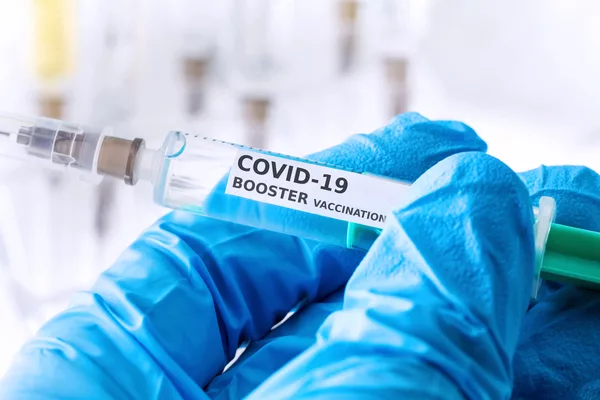
You might have recently heard that Bella Hadid is spreading awareness about Lyme disease. The supermodel told her nearly 60 million Instagram followers that she’s completed 100 days of treatment after suffering for nearly 15 years with the condition, posting photos of herself having a variety of tests and procedures, and even sharing some of her medical records. Thankfully, Hadid says she is “finally healthy” — but like so many others with Lyme disease, she’s battled a host of difficult symptoms.
As Good Housekeeping reports, about 30,000 cases of Lyme disease in the U.S. are reported to the Centers for Disease Control and Prevention by state and local health departments each year. However, the CDC says that many more cases aren’t tracked this way, and estimates that as many as a half million people may actually get Lyme disease annually.
“Lyme disease can be a challenging diagnosis,” Daniel Cameron, MD, MPH, an internist and clinical epidemiologist practicing in Mt. Kisco, New York who specializes in the treatment of Lyme and other tick-borne illnesses, tells Good Housekeeping. “Patients can get lost in the system because of symptoms being overlooked. You can be sick for a year or two without knowing you have Lyme disease.” This is because Lyme disease can affect many parts of your body, so it can be easily mistaken for other conditions. A recent study also found that many physicians may not be able to properly recognize a rash (which is one of the most common signs of a bite) in people with darker skin tones.
What is Lyme disease?
“Lyme is caused by a spirochetal bacteria that infects the brain and other nerve tissue,” says Christine Green, MD, a complementary, integrative, and orthomolecular medicine specialist in Palo Alto, California who treats tick-borne illness, and is on the board of LymeDisease.org. “It also can infect connective tissue, joints, the heart and the urinary system.”
According to the Centers for Disease Control and Prevention, humans get infected after being bitten by blacklegged ticks (or deer ticks). Lyme disease can happen to any age group, but those at higher-risk are people who spend a lot of time outdoors in the forest and forest-like areas.
The New York State Department of Health states that “the chances of being bitten by a deer tick are greater during times of the year when ticks are most active.” The site says that ticks can be active anytime of year when the temperature is above 45-degrees, but that “young deer ticks, called nymphs, are active from mid-May to mid-August and are about the size of poppy seeds. Adult ticks are most active from March to mid-May and from mid-August to November and are about the size of sesame seeds.”
Lyme disease symptoms
According to Mayo Clinic, Lyme disease symptoms commonly occur in stages.
Common stage 1 symptoms that show up 3 to 30 days after a tick bite include:
- A circular rash at the site of the bite that may or may not look like a bullseye–it may feel warm, but usually won’t itch or hurt
- Fever
- Headache
- Severe fatigue
- Joint stiffness
- Muscle pain
- Swelling of your lymph nodes
Stage 2 symptoms happen next, and may include:
- Rashes on other parts of your body
- A stiff or painful neck
- Muscle weakness on one or both sides of your face
- Irregular heartbeat
- Hip and leg pain
- Numbness, weakness or pain in your hands or feet
- Painful, swollen eyes or eyelids, and/or vision loss
Stage 3 symptoms can include:
- Any combination of symptoms from previous stages
- Arthritis
- Acrodermatitis chronic atrophicans, a skin condition that causes swelling and discoloration of your hands, feet, elbows or knees
Other Lyme disease signs
Lyme disease can present in less-expected ways as well. Keep in mind that “It can take up to 6 weeks for symptoms to appear,” warns Dr. Cameron.
What should you do when bitten?
“Don’t squeeze the tick – it might spew its saliva into you and potentially worsen infection,” says Dr. Cameron. Instead, remove the tick with tweezers or a tick remover, advises Dr. Green. “The tweezers or fork should be placed as close to your skin as possible – pull it out slowly and steadily. Place the tick in a plastic bag or jar with a moist piece of tissue, so it can be sent to your local county for identification of Lyme bacteria. Several sites also will test the tick for Lyme and other tick borne diseases, such as Tick Report.”
Treatment
Once you’ve been diagnosed, the standard form of treatment is usually antibiotics that will target your infection and better your chances of avoiding persistent symptoms and long-term health problems. However, CDC notes that more research is needed “to better understand how to treat, manage and support people with persistent symptoms associated with Lyme disease.”
Prevention
You can prevent Lyme disease by:
- Wearing long pants and long sleeves, plus a hat and closed shoes.
- Spraying your clothes with permethrin, an insecticide you can find at the lawn and garden store, and spraying your skin sparingly with a repellant containing DEET.
- Avoiding overhanging greenery or brush in the woods.
- Taking a shower as soon as you get back indoors.
- Checking your pets for ticks they may bring into your home.
—
Photo Credit: inspiring.team / Shutterstock.com




